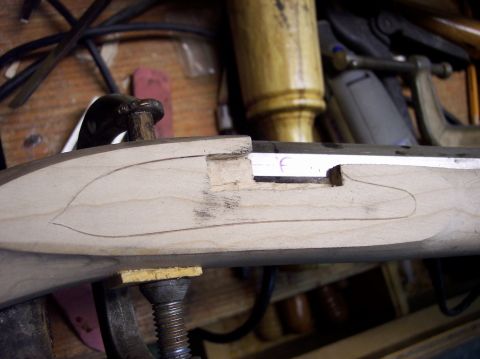After a little measuring I decided my lock panel was much too thick. When you inlet deeply for your for your lock you tend to get sloppy because you can't see the inlet very well.
I filed off a bunch of wood and followed up with a sanding block.

It is important to keep your lock panel square with the top flat of your barrel as you go down.

Before, my lock plate only touched wood on the top side, after leveling the lock panel and recutting my inlet marks everything is even.

And down we go; black the plate, press it on the wood and remove the black marks only. Takes a while but you will get there.

Cutting the inlet for the nose of the lock is always difficult, I never have the right size gouge to fit the curve. Concrete nails to the rescue, I heat a nail, pound it flat and make a gouge to perfectly fit the curvature of the lock plate nose. After I get the gouge shaped I reheat it and quench it to bring back the hardness.

